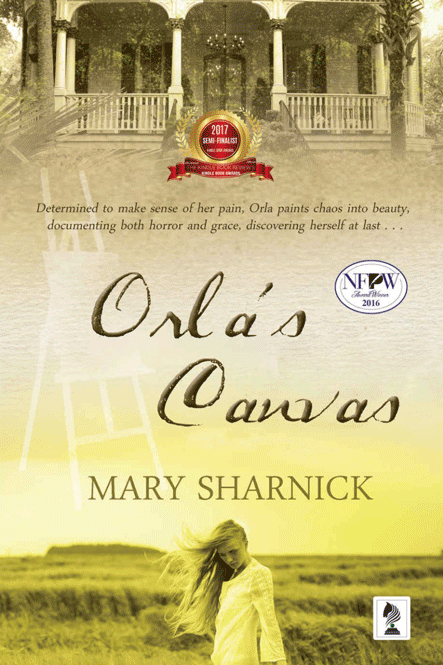ORLA’S CANVAS
Narrated by eleven-year-old Orla Gwen Gleason, Orla’s Canvas opens on Easter Sunday, in St. Suplice, Louisiana, a “misspelled town” north of New Orleans, and traces Orla’s dawning realization that all is not as it seems in her personal life or in the life of her community. The death of St. Suplice’s doyenne, Mrs. Bellefleur Dubois Castleberry, for whom Orla’s mother keeps house, reveals Orla’s true paternity, shatters her trust in her beloved mother, and exposes her to the harsh realities of class and race in the Civil Rights-era South. When the Klan learns of Mrs. Castleberry’s collaboration with the local Negro minister and Archbishop Rummel to integrate the parochial school, violence fractures St. Suplice’s vulnerable stability. The brutality Orla witnesses at summer’s end awakens her to life’s tenuous fragility. Like the South in which she lives, she suffers the turbulence of changing times. Smart, resilient, and fiercely determined to make sense of her pain, Orla paints chaos into beauty, documenting both horror and grace, discovering herself at last through her art.
Testimonials
The BookImagine elements of Mark Twain, William Faulkner and Flannery O’Connor distilled and harmoniously concocted in a highly literary and authentic modern masterpiece. Orla’s Canvas is a novel that looks like a painting and tastes like a Southern feast with Irish, French and African flavors mixing together. The protagonist Orla Gleason is a painstakingly observant yet refreshingly non-judgmental prepubescent Southern girl of Irish extraction who is trying to find her voice in the volatile political climate. Nothing escapes her senses, no smell, sight or sound. She’s almost a creature without skin, hyper in tune with the elements. Some people’s nervous systems are wired like that. They pick up on subtlest of stimuli that go over most people’s heads. Orla can tell you the flavor of every ice-cream cone she’s had, the texture of the floorboards, the temperature of the water in the river on any given day. Paired with photographic memory, such intense sensitivity can lead to mental instability – unless the person is given an outlet for channeling those sensory impressions. For Orla Gleason it becomes art. I would not hesitate to call her a 20th century female Huck Finn.
Mary Sharnick does understand violence and brutality, and I applaud her skill for depicting them in a very raw, nonchalant manner without gratuitous editorial melodrama. I am familiar with the author’s two previous novels set in Venice during the 17th and 15th centuries respectively. Orla’s Canvas is very different from the point of view of setting and focus, but if you read Sharnick’s previous novels, you will see how she continues to capitalize on her talent for depicting tragedy and the subsequent redemption using bold, precise strokes.
AUDIOBOOK
Orla’s Canvas provides an unforgettable, sometimes shocking, snapshot of the deep South during the turbulent times of the Civil Rights Movement. Told through the eyes of Orla Gwen Gleason, an eleven-year-old artist, the author, Mary Sharnick, captures the anxiety and injustice of the times. Orla’s innocence and grace are juxtaposed with a community’s racial cruelty and hate. I have read this book twice (enjoyed it both times) and listened to the new audio book version narrated by Billie Bryant. Ms. Bryant’s narration is superb and expertly captures the southern voice.
Sharnick paints her characters with the same expert strokes as her heroine paints her subjects. Orla’s Canvas is a captivating read for any young adult exploring the unrest of the mid-1900s. Mary Sharnick is a gifted storyteller indeed.


